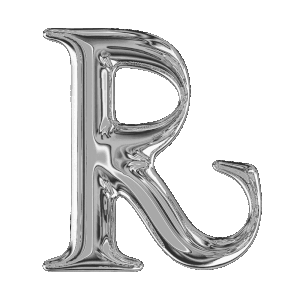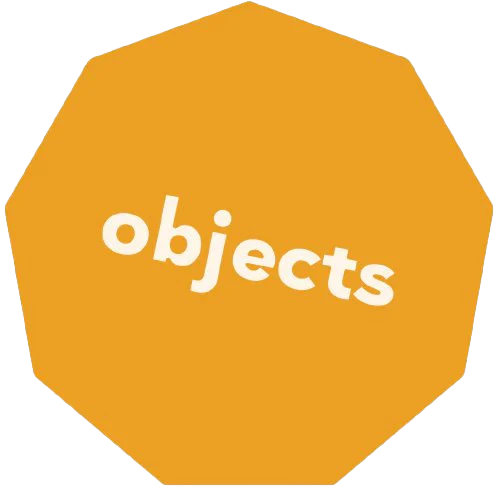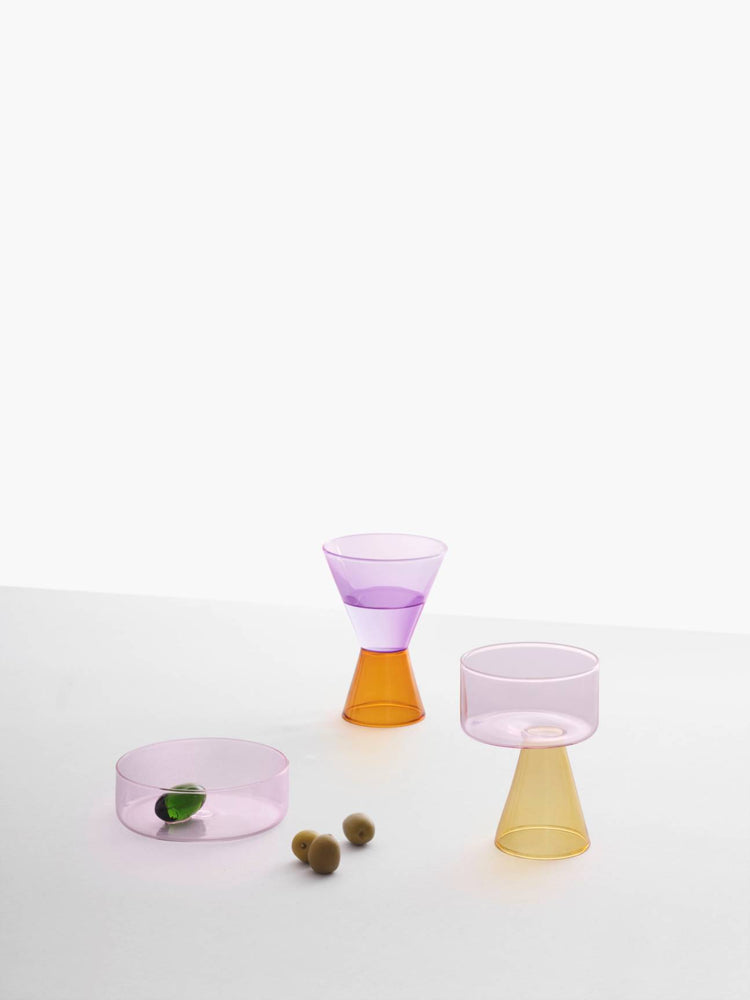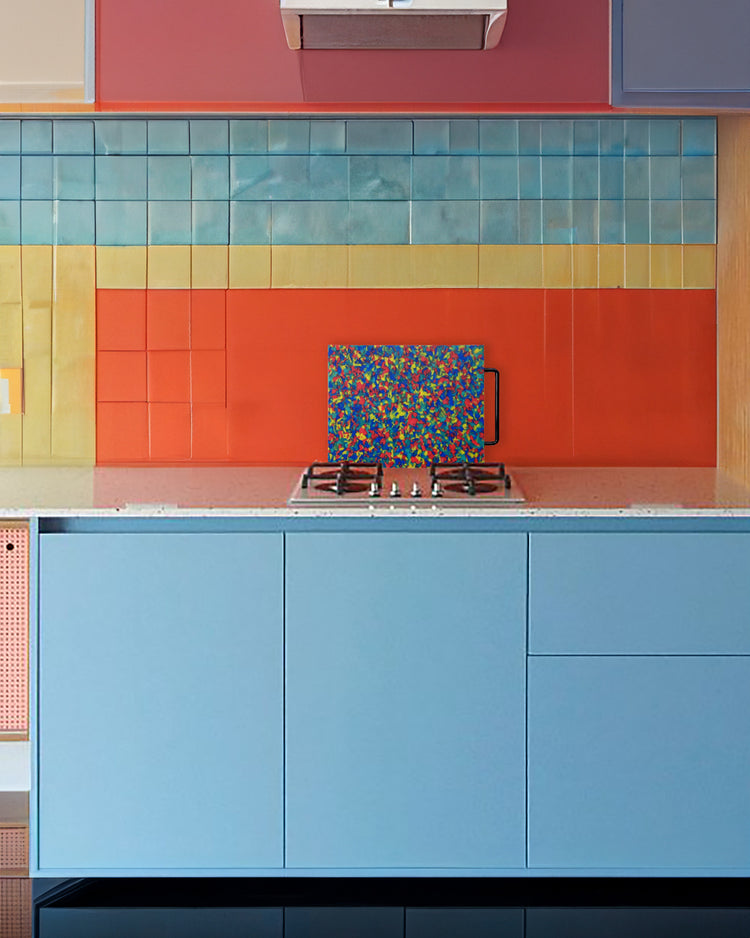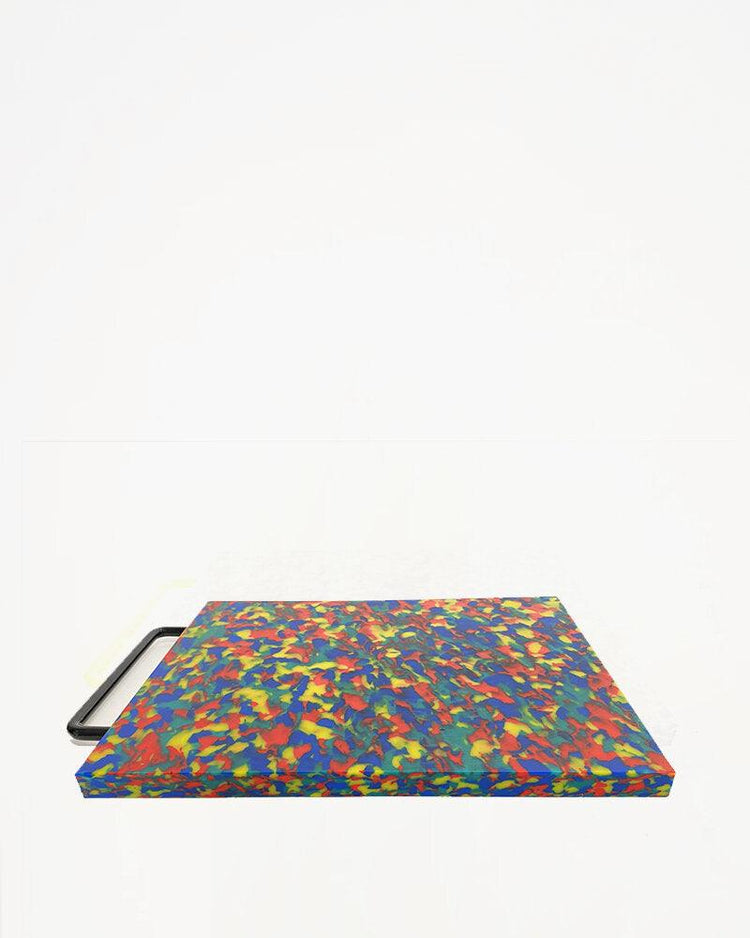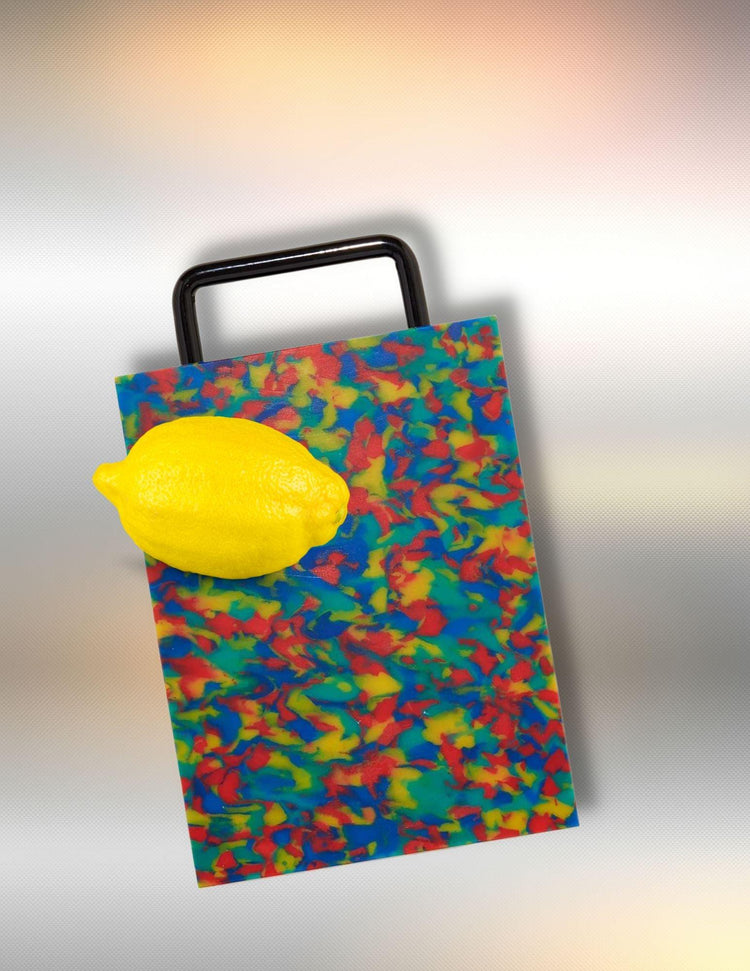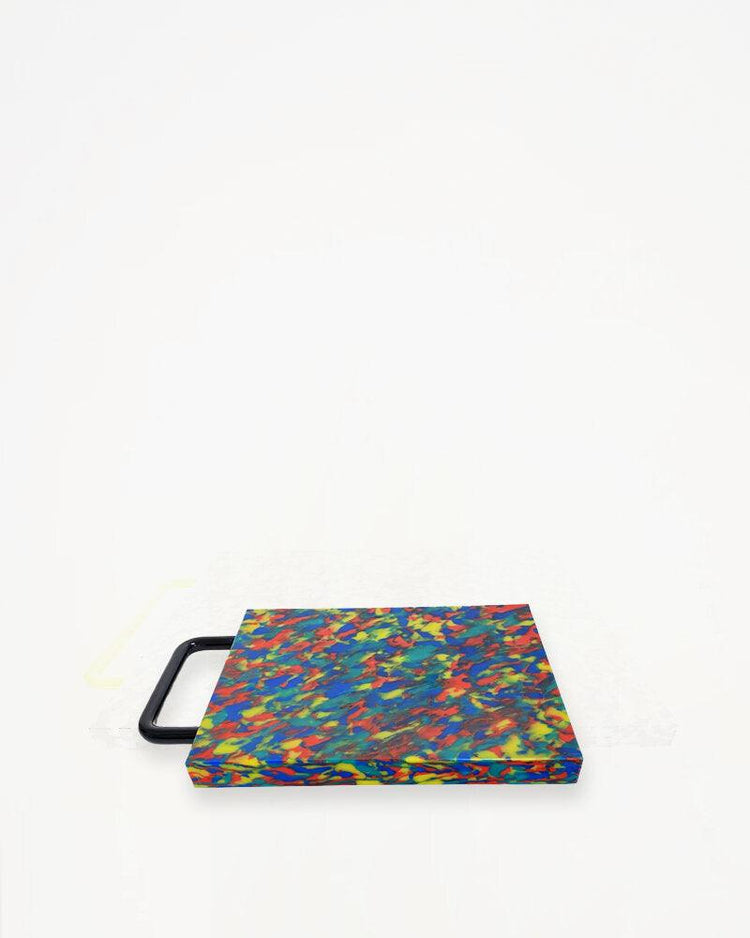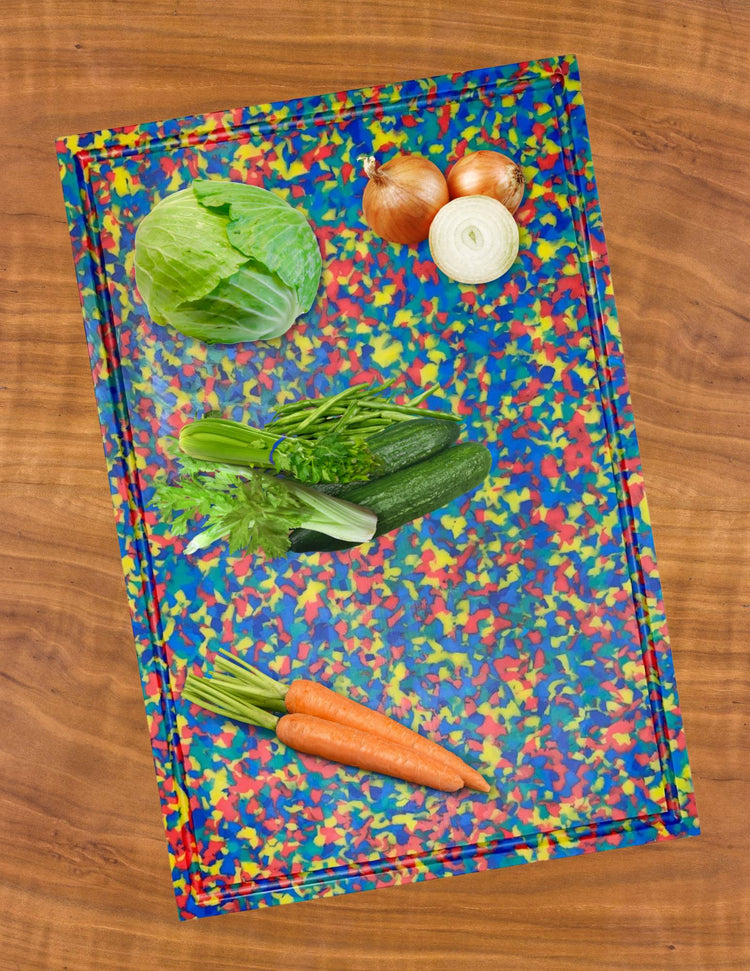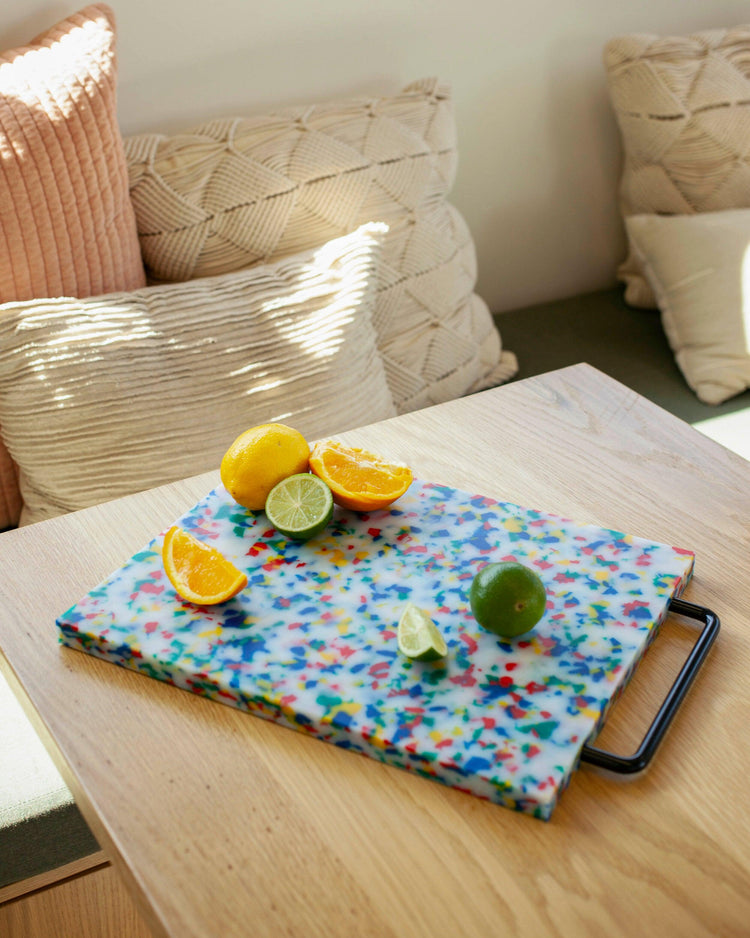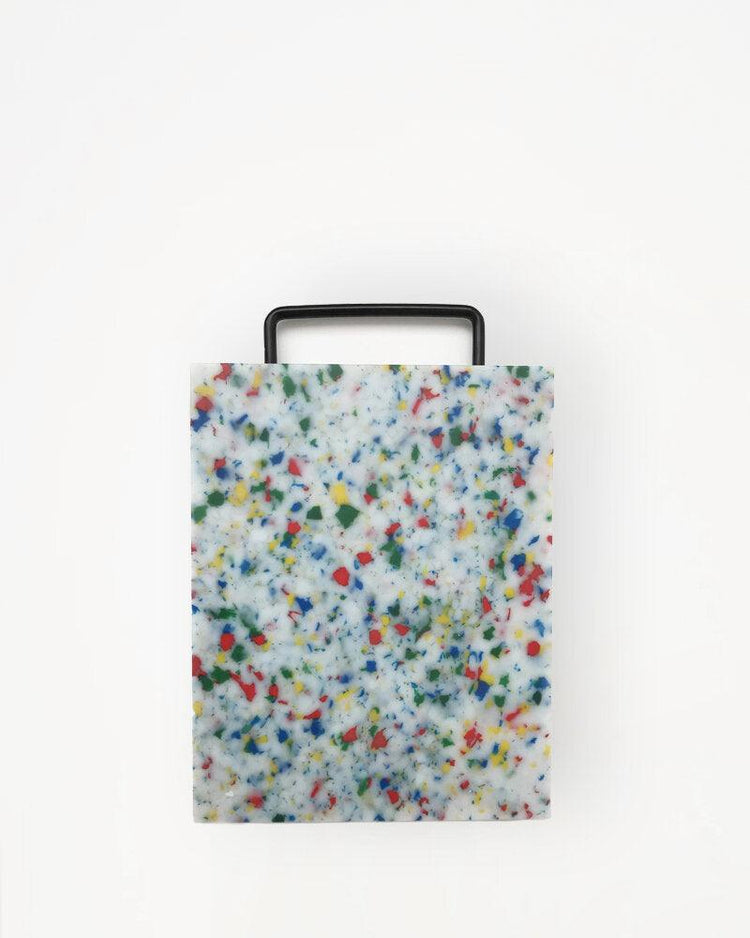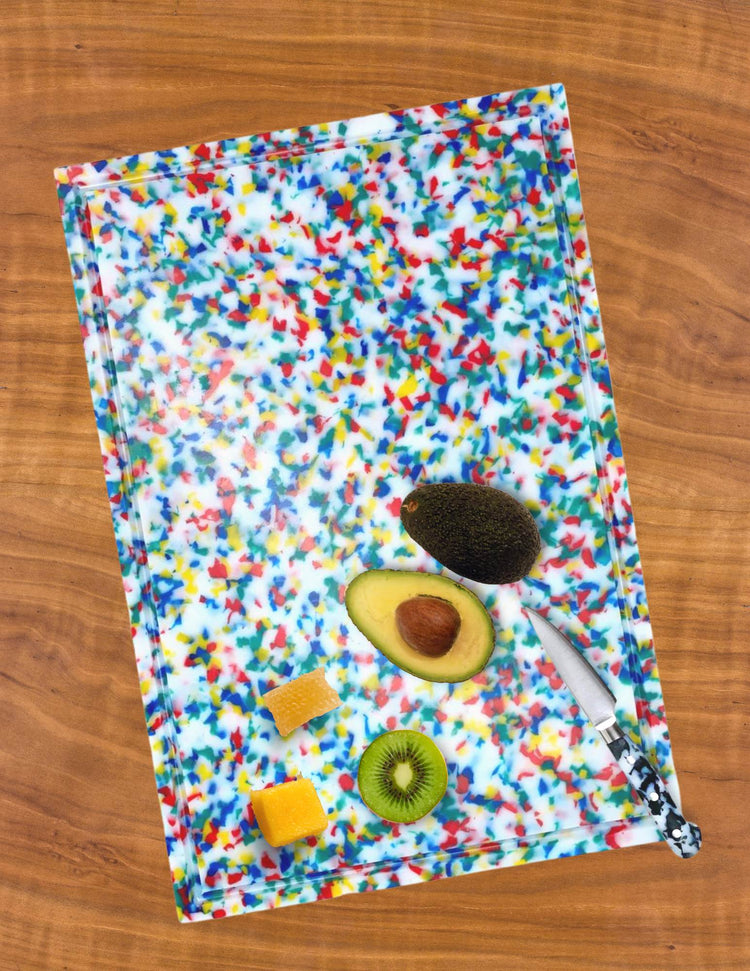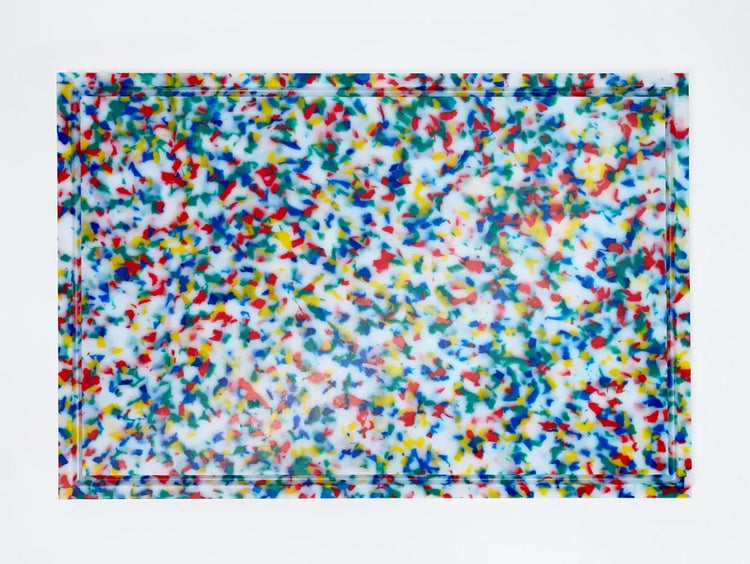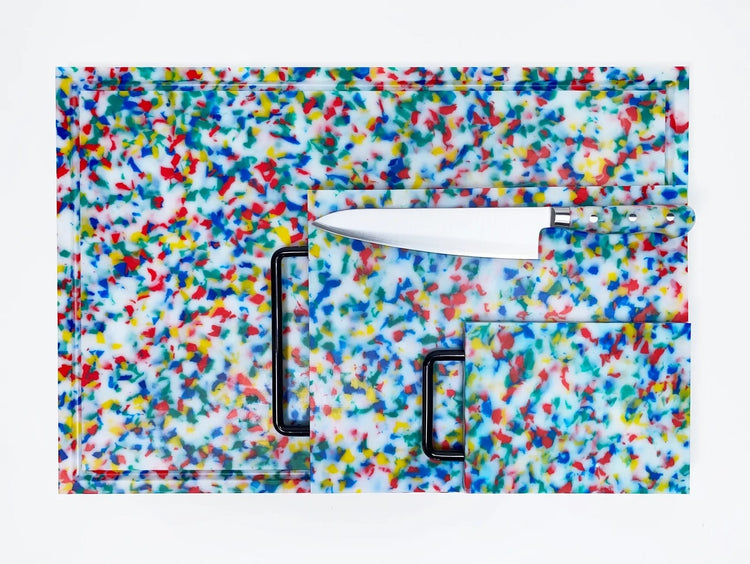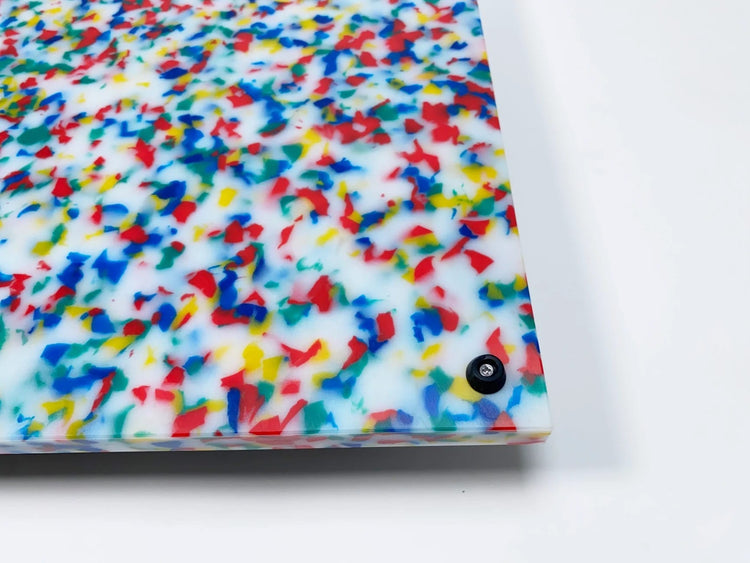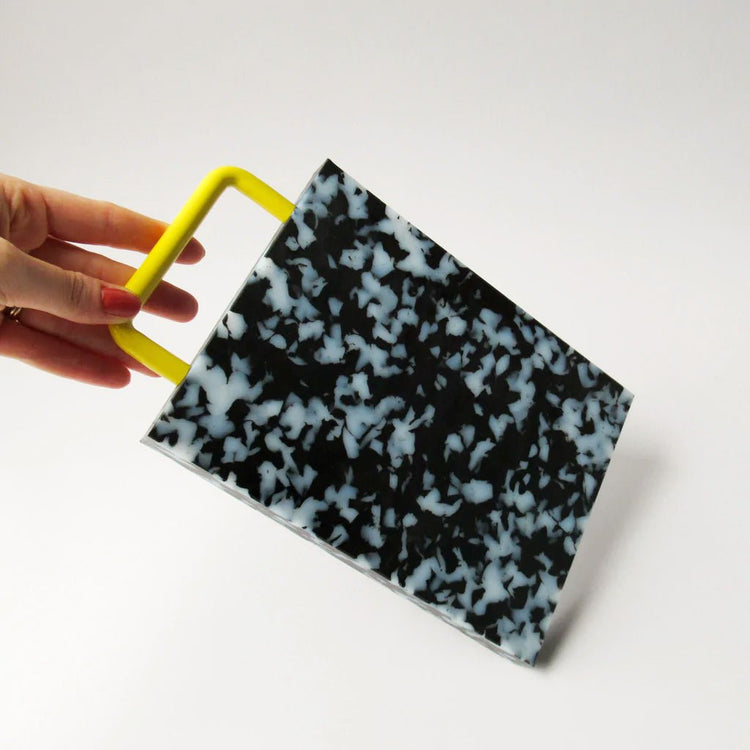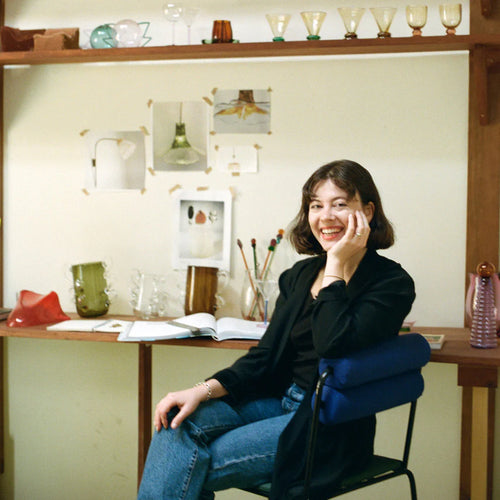
about the designer
Sophie Lou Jacobsen is a French-American designer currently based in New York City. She designs objects, furniture, and spaces. She established her studio two years ago, and since then has been focused primarily on objects of everyday use, mostly using glass as a medium and exploring the interaction between object and user. Her work stems from the idea that objects have an innate power to enhance their user's mood through form and function. She focuses on simple objects and rituals, to see how she can alter these in ways that are surprising, delightful, and elevate the user experience. She believes that the objects which we surround ourselves with can and should be imbued with a certain poetry, creating a relationship between humans and objects built on mutual respect.

about the designer
Sophie Lou Jacobsen is a French-American designer currently based in New York City. She designs objects, furniture, and spaces. She established her studio two years ago, and since then has been focused primarily on objects of everyday use, mostly using glass as a medium and exploring the interaction between object and user. Her work stems from the idea that objects have an innate power to enhance their user's mood through form and function. She focuses on simple objects and rituals, to see how she can alter these in ways that are surprising, delightful, and elevate the user experience. She believes that the objects which we surround ourselves with can and should be imbued with a certain poetry, creating a relationship between humans and objects built on mutual respect.
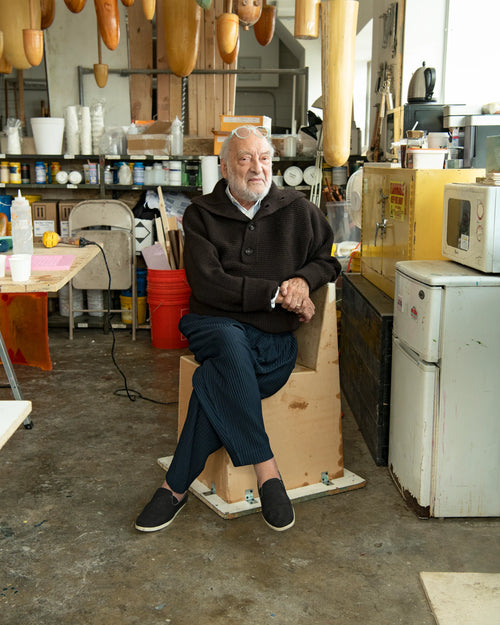
about the designer
Renowned architect, artist, and designer Gaetano Pesce has left an indelible mark in fields ranging from architecture to industrial design since his birth in La Spezia, Italy, in 1939. In the mid-90’s Gaetano Pesce pioneered the use of the resin as material to create design products and the Fish Design adventure began. Celebrated for his innovative use of resin in design, especially with his iconic Fish Design collections, Pesce's work is characterized by a blend of double functionality, vibrant color use, and material perfectionism. His influential pieces, a fixture in major museums worldwide, encapsulate a dynamic career spanning decades and continents, with a significant contribution to design history alongside collaborator Andrea Corsi since the early 2000s

about the designer
Renowned architect, artist, and designer Gaetano Pesce has left an indelible mark in fields ranging from architecture to industrial design since his birth in La Spezia, Italy, in 1939. In the mid-90’s Gaetano Pesce pioneered the use of the resin as material to create design products and the Fish Design adventure began. Celebrated for his innovative use of resin in design, especially with his iconic Fish Design collections, Pesce's work is characterized by a blend of double functionality, vibrant color use, and material perfectionism. His influential pieces, a fixture in major museums worldwide, encapsulate a dynamic career spanning decades and continents, with a significant contribution to design history alongside collaborator Andrea Corsi since the early 2000s
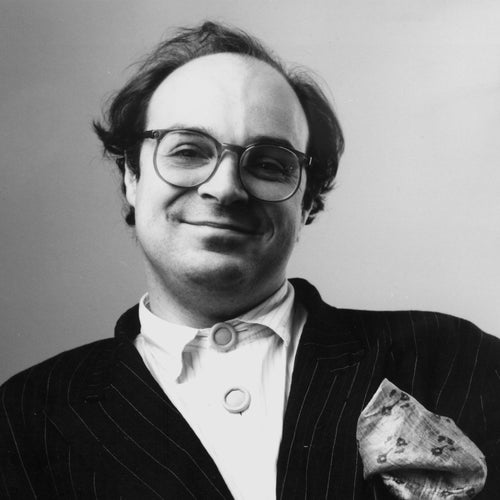
about the designer
Marco Zanini graduated in Architecture from the University of Florence in 1976 and completed his studies in the United States. In 1977 he began collaborating with Ettore Sottsass in Milan. Zanini was one of the co-founders of Memphis in 1981, and designed works for all the collections. He designs ceramics, jewelry, furniture, and blown-glass objects. Founder together with Sottsass of Sottsass Associati, he is the Design Manager for many projects: office furniture for well-known brands, residential interiors, showroom interiors, exhibition design, street furniture and industrial products for a wide range of clients in Italy and abroad. He works as architect and designer in Japan, the United States, Australia, New Zealand, Colombia, Chile, and Spain. His works are to be found in numerous museums and private collections. Zanini holds frequent conferences on industrial design. Today he lives and works in São Paulo, Brazil.

about the designer
Marco Zanini graduated in Architecture from the University of Florence in 1976 and completed his studies in the United States. In 1977 he began collaborating with Ettore Sottsass in Milan. Zanini was one of the co-founders of Memphis in 1981, and designed works for all the collections. He designs ceramics, jewelry, furniture, and blown-glass objects. Founder together with Sottsass of Sottsass Associati, he is the Design Manager for many projects: office furniture for well-known brands, residential interiors, showroom interiors, exhibition design, street furniture and industrial products for a wide range of clients in Italy and abroad. He works as architect and designer in Japan, the United States, Australia, New Zealand, Colombia, Chile, and Spain. His works are to be found in numerous museums and private collections. Zanini holds frequent conferences on industrial design. Today he lives and works in São Paulo, Brazil.

about the designer
Sophie Lou Jacobsen is a French-American designer currently based in New York City. She established her studio in 2019, with an initial focus on objects of everyday use, mostly using glass as a medium and exploring the interaction between object and user. Her work stems from the idea that objects have an innate power to enhance their user's mood through form and function. She focuses on simple objects and rituals, to see how she can alter these in ways that are surprising, delightful, and elevate the user experience. She believes that the objects which we surround ourselves with can and should be imbued with a certain poetry, creating a relationship between humans and objects built on mutual respect.

about the designer
Sophie Lou Jacobsen is a French-American designer currently based in New York City. She established her studio in 2019, with an initial focus on objects of everyday use, mostly using glass as a medium and exploring the interaction between object and user. Her work stems from the idea that objects have an innate power to enhance their user's mood through form and function. She focuses on simple objects and rituals, to see how she can alter these in ways that are surprising, delightful, and elevate the user experience. She believes that the objects which we surround ourselves with can and should be imbued with a certain poetry, creating a relationship between humans and objects built on mutual respect.

about the designer
Sophie Lou Jacobsen is a French-American designer currently based in New York City. She established her studio in 2019, with an initial focus on objects of everyday use, mostly using glass as a medium and exploring the interaction between object and user. Her work stems from the idea that objects have an innate power to enhance their user's mood through form and function. She focuses on simple objects and rituals, to see how she can alter these in ways that are surprising, delightful, and elevate the user experience. She believes that the objects which we surround ourselves with can and should be imbued with a certain poetry, creating a relationship between humans and objects built on mutual respect.

about the designer
Sophie Lou Jacobsen is a French-American designer currently based in New York City. She established her studio in 2019, with an initial focus on objects of everyday use, mostly using glass as a medium and exploring the interaction between object and user. Her work stems from the idea that objects have an innate power to enhance their user's mood through form and function. She focuses on simple objects and rituals, to see how she can alter these in ways that are surprising, delightful, and elevate the user experience. She believes that the objects which we surround ourselves with can and should be imbued with a certain poetry, creating a relationship between humans and objects built on mutual respect.
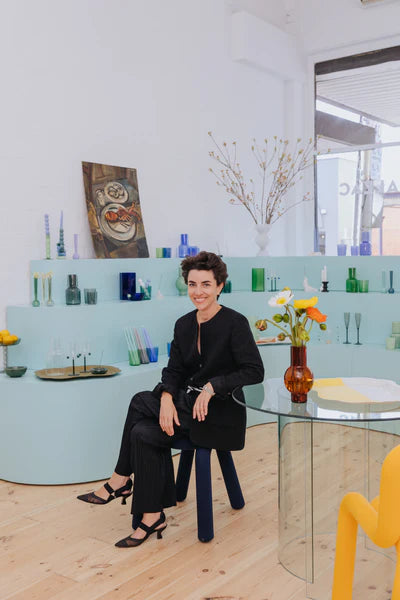
about the designer
Maison Balzac was created in Australia in 2012 by French-born Elise Pioch Balzac to express her endless imagination. What started as a collection of five perfumed candles has become a homeware world of its own, exploring the beauty of hand-blown coloured glassware, trompe l'oeil linen, colourful platters and unusual fragrances. We invent intriguing and playful objects to trigger emotions around the dining table, transforming the everyday act of eating or drinking into quirky, memorable moments.

about the designer
Maison Balzac was created in Australia in 2012 by French-born Elise Pioch Balzac to express her endless imagination. What started as a collection of five perfumed candles has become a homeware world of its own, exploring the beauty of hand-blown coloured glassware, trompe l'oeil linen, colourful platters and unusual fragrances. We invent intriguing and playful objects to trigger emotions around the dining table, transforming the everyday act of eating or drinking into quirky, memorable moments.
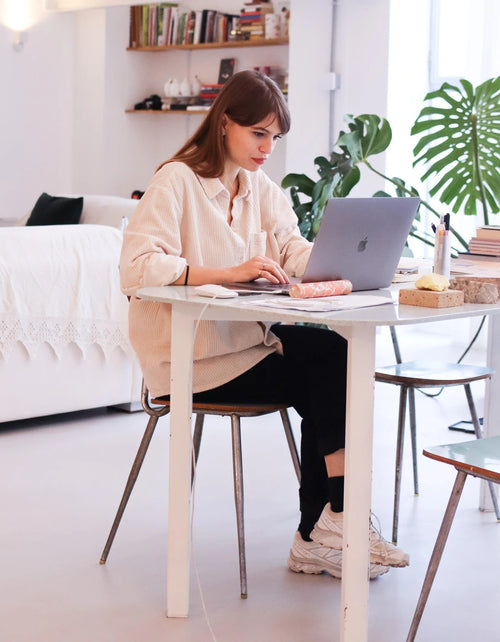
about the designer
Italian designer Astrid Luglio was born in Naples in 1988. She studied at NABA - the New Academy of Fine Arts - in Milan, graduating with a Bachelor’s degree in Product Design. Traveling has been part of her education in fact after the studies, Astrid has lived and worked in Melbourne where she freelanced for local clients, Ho Chi Minh City and Oslo where part of her family lives. Upon returning to Italy, she began working with Milan-based TourDeFork, a design studio inspired by food and culinary culture. In 2018, she founded her own independent studio and started to teach Design of Small Objects to international students at NABA, New Academy of Fine Art in Milan.

about the designer
Italian designer Astrid Luglio was born in Naples in 1988. She studied at NABA - the New Academy of Fine Arts - in Milan, graduating with a Bachelor’s degree in Product Design. Traveling has been part of her education in fact after the studies, Astrid has lived and worked in Melbourne where she freelanced for local clients, Ho Chi Minh City and Oslo where part of her family lives. Upon returning to Italy, she began working with Milan-based TourDeFork, a design studio inspired by food and culinary culture. In 2018, she founded her own independent studio and started to teach Design of Small Objects to international students at NABA, New Academy of Fine Art in Milan.
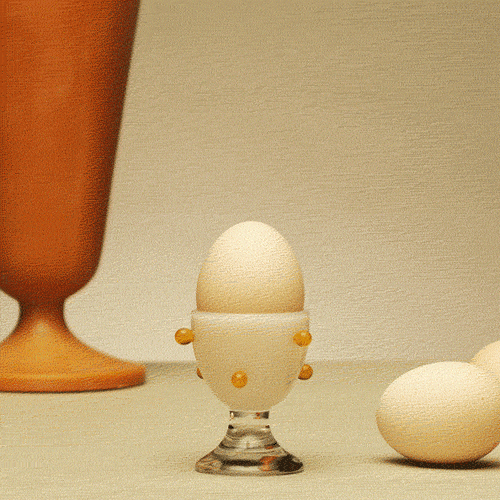
about the designer
Maison Balzac was created in Australia in 2012 by French-born Elise Pioch Balzac to express her endless imagination. What started as a collection of five perfumed candles has become a homeware world of its own, exploring the beauty of hand-blown coloured glassware, trompe l'oeil linen, colourful platters and unusual fragrances. We invent intriguing and playful objects to trigger emotions around the dining table, transforming the everyday act of eating or drinking into quirky, memorable moments.

about the designer
Maison Balzac was created in Australia in 2012 by French-born Elise Pioch Balzac to express her endless imagination. What started as a collection of five perfumed candles has become a homeware world of its own, exploring the beauty of hand-blown coloured glassware, trompe l'oeil linen, colourful platters and unusual fragrances. We invent intriguing and playful objects to trigger emotions around the dining table, transforming the everyday act of eating or drinking into quirky, memorable moments.

about the designer
Fredericks & Mae is a design studio reveling in the art of the gift. They are committed to bringing objects into the world that prompt wide eyes, inexplicable delight, and full body chills. A well chosen gift can be a bolt of connection - a beacon that reminds us of our relationships. They are ever-vigilant for the commodification of joy and the dangers of material accumulation - but love to surround themselves with a few well chosen beautiful things. Every mantle is an altar, each shelf a shrine, a coffee table a collection of things that tell a story about where we come from and where we want to go.

about the designer
Fredericks & Mae is a design studio reveling in the art of the gift. They are committed to bringing objects into the world that prompt wide eyes, inexplicable delight, and full body chills. A well chosen gift can be a bolt of connection - a beacon that reminds us of our relationships. They are ever-vigilant for the commodification of joy and the dangers of material accumulation - but love to surround themselves with a few well chosen beautiful things. Every mantle is an altar, each shelf a shrine, a coffee table a collection of things that tell a story about where we come from and where we want to go.

about the designer
Maison Balzac was created in Australia in 2012 by French-born Elise Pioch Balzac to express her endless imagination. What started as a collection of five perfumed candles has become a homeware world of its own, exploring the beauty of hand-blown coloured glassware, trompe l'oeil linen, colourful platters and unusual fragrances. We invent intriguing and playful objects to trigger emotions around the dining table, transforming the everyday act of eating or drinking into quirky, memorable moments.

about the designer
Maison Balzac was created in Australia in 2012 by French-born Elise Pioch Balzac to express her endless imagination. What started as a collection of five perfumed candles has become a homeware world of its own, exploring the beauty of hand-blown coloured glassware, trompe l'oeil linen, colourful platters and unusual fragrances. We invent intriguing and playful objects to trigger emotions around the dining table, transforming the everyday act of eating or drinking into quirky, memorable moments.

about the designer
Fredericks & Mae is a design studio reveling in the art of the gift. They are committed to bringing objects into the world that prompt wide eyes, inexplicable delight, and full body chills. A well chosen gift can be a bolt of connection - a beacon that reminds us of our relationships. They are ever-vigilant for the commodification of joy and the dangers of material accumulation - but love to surround themselves with a few well chosen beautiful things. Every mantle is an altar, each shelf a shrine, a coffee table a collection of things that tell a story about where we come from and where we want to go.

about the designer
Fredericks & Mae is a design studio reveling in the art of the gift. They are committed to bringing objects into the world that prompt wide eyes, inexplicable delight, and full body chills. A well chosen gift can be a bolt of connection - a beacon that reminds us of our relationships. They are ever-vigilant for the commodification of joy and the dangers of material accumulation - but love to surround themselves with a few well chosen beautiful things. Every mantle is an altar, each shelf a shrine, a coffee table a collection of things that tell a story about where we come from and where we want to go.

about the designer
Fredericks & Mae is a design studio reveling in the art of the gift. They are committed to bringing objects into the world that prompt wide eyes, inexplicable delight, and full body chills. A well chosen gift can be a bolt of connection - a beacon that reminds us of our relationships. They are ever-vigilant for the commodification of joy and the dangers of material accumulation - but love to surround themselves with a few well chosen beautiful things. Every mantle is an altar, each shelf a shrine, a coffee table a collection of things that tell a story about where we come from and where we want to go.

about the designer
Fredericks & Mae is a design studio reveling in the art of the gift. They are committed to bringing objects into the world that prompt wide eyes, inexplicable delight, and full body chills. A well chosen gift can be a bolt of connection - a beacon that reminds us of our relationships. They are ever-vigilant for the commodification of joy and the dangers of material accumulation - but love to surround themselves with a few well chosen beautiful things. Every mantle is an altar, each shelf a shrine, a coffee table a collection of things that tell a story about where we come from and where we want to go.

about the designer
Fredericks & Mae is a design studio reveling in the art of the gift. They are committed to bringing objects into the world that prompt wide eyes, inexplicable delight, and full body chills. A well chosen gift can be a bolt of connection - a beacon that reminds us of our relationships. They are ever-vigilant for the commodification of joy and the dangers of material accumulation - but love to surround themselves with a few well chosen beautiful things. Every mantle is an altar, each shelf a shrine, a coffee table a collection of things that tell a story about where we come from and where we want to go.

about the designer
Fredericks & Mae is a design studio reveling in the art of the gift. They are committed to bringing objects into the world that prompt wide eyes, inexplicable delight, and full body chills. A well chosen gift can be a bolt of connection - a beacon that reminds us of our relationships. They are ever-vigilant for the commodification of joy and the dangers of material accumulation - but love to surround themselves with a few well chosen beautiful things. Every mantle is an altar, each shelf a shrine, a coffee table a collection of things that tell a story about where we come from and where we want to go.

about the designer
Fredericks & Mae is a design studio reveling in the art of the gift. They are committed to bringing objects into the world that prompt wide eyes, inexplicable delight, and full body chills. A well chosen gift can be a bolt of connection - a beacon that reminds us of our relationships. They are ever-vigilant for the commodification of joy and the dangers of material accumulation - but love to surround themselves with a few well chosen beautiful things. Every mantle is an altar, each shelf a shrine, a coffee table a collection of things that tell a story about where we come from and where we want to go.

about the designer
Fredericks & Mae is a design studio reveling in the art of the gift. They are committed to bringing objects into the world that prompt wide eyes, inexplicable delight, and full body chills. A well chosen gift can be a bolt of connection - a beacon that reminds us of our relationships. They are ever-vigilant for the commodification of joy and the dangers of material accumulation - but love to surround themselves with a few well chosen beautiful things. Every mantle is an altar, each shelf a shrine, a coffee table a collection of things that tell a story about where we come from and where we want to go.

about the designer
Fredericks & Mae is a design studio reveling in the art of the gift. They are committed to bringing objects into the world that prompt wide eyes, inexplicable delight, and full body chills. A well chosen gift can be a bolt of connection - a beacon that reminds us of our relationships. They are ever-vigilant for the commodification of joy and the dangers of material accumulation - but love to surround themselves with a few well chosen beautiful things. Every mantle is an altar, each shelf a shrine, a coffee table a collection of things that tell a story about where we come from and where we want to go.

about the designer
Fredericks & Mae is a design studio reveling in the art of the gift. They are committed to bringing objects into the world that prompt wide eyes, inexplicable delight, and full body chills. A well chosen gift can be a bolt of connection - a beacon that reminds us of our relationships. They are ever-vigilant for the commodification of joy and the dangers of material accumulation - but love to surround themselves with a few well chosen beautiful things. Every mantle is an altar, each shelf a shrine, a coffee table a collection of things that tell a story about where we come from and where we want to go.

about the designer
Fredericks & Mae is a design studio reveling in the art of the gift. They are committed to bringing objects into the world that prompt wide eyes, inexplicable delight, and full body chills. A well chosen gift can be a bolt of connection - a beacon that reminds us of our relationships. They are ever-vigilant for the commodification of joy and the dangers of material accumulation - but love to surround themselves with a few well chosen beautiful things. Every mantle is an altar, each shelf a shrine, a coffee table a collection of things that tell a story about where we come from and where we want to go.

about the designer
Fredericks & Mae is a design studio reveling in the art of the gift. They are committed to bringing objects into the world that prompt wide eyes, inexplicable delight, and full body chills. A well chosen gift can be a bolt of connection - a beacon that reminds us of our relationships. They are ever-vigilant for the commodification of joy and the dangers of material accumulation - but love to surround themselves with a few well chosen beautiful things. Every mantle is an altar, each shelf a shrine, a coffee table a collection of things that tell a story about where we come from and where we want to go.

about the designer
Fredericks & Mae is a design studio reveling in the art of the gift. They are committed to bringing objects into the world that prompt wide eyes, inexplicable delight, and full body chills. A well chosen gift can be a bolt of connection - a beacon that reminds us of our relationships. They are ever-vigilant for the commodification of joy and the dangers of material accumulation - but love to surround themselves with a few well chosen beautiful things. Every mantle is an altar, each shelf a shrine, a coffee table a collection of things that tell a story about where we come from and where we want to go.

about the designer
Fredericks & Mae is a design studio reveling in the art of the gift. They are committed to bringing objects into the world that prompt wide eyes, inexplicable delight, and full body chills. A well chosen gift can be a bolt of connection - a beacon that reminds us of our relationships. They are ever-vigilant for the commodification of joy and the dangers of material accumulation - but love to surround themselves with a few well chosen beautiful things. Every mantle is an altar, each shelf a shrine, a coffee table a collection of things that tell a story about where we come from and where we want to go.

about the designer
Fredericks & Mae is a design studio reveling in the art of the gift. They are committed to bringing objects into the world that prompt wide eyes, inexplicable delight, and full body chills. A well chosen gift can be a bolt of connection - a beacon that reminds us of our relationships. They are ever-vigilant for the commodification of joy and the dangers of material accumulation - but love to surround themselves with a few well chosen beautiful things. Every mantle is an altar, each shelf a shrine, a coffee table a collection of things that tell a story about where we come from and where we want to go.

about the designer
Fredericks & Mae is a design studio reveling in the art of the gift. They are committed to bringing objects into the world that prompt wide eyes, inexplicable delight, and full body chills. A well chosen gift can be a bolt of connection - a beacon that reminds us of our relationships. They are ever-vigilant for the commodification of joy and the dangers of material accumulation - but love to surround themselves with a few well chosen beautiful things. Every mantle is an altar, each shelf a shrine, a coffee table a collection of things that tell a story about where we come from and where we want to go.

about the designer
Fredericks & Mae is a design studio reveling in the art of the gift. They are committed to bringing objects into the world that prompt wide eyes, inexplicable delight, and full body chills. A well chosen gift can be a bolt of connection - a beacon that reminds us of our relationships. They are ever-vigilant for the commodification of joy and the dangers of material accumulation - but love to surround themselves with a few well chosen beautiful things. Every mantle is an altar, each shelf a shrine, a coffee table a collection of things that tell a story about where we come from and where we want to go.

about the designer
Fredericks & Mae is a design studio reveling in the art of the gift. They are committed to bringing objects into the world that prompt wide eyes, inexplicable delight, and full body chills. A well chosen gift can be a bolt of connection - a beacon that reminds us of our relationships. They are ever-vigilant for the commodification of joy and the dangers of material accumulation - but love to surround themselves with a few well chosen beautiful things. Every mantle is an altar, each shelf a shrine, a coffee table a collection of things that tell a story about where we come from and where we want to go.
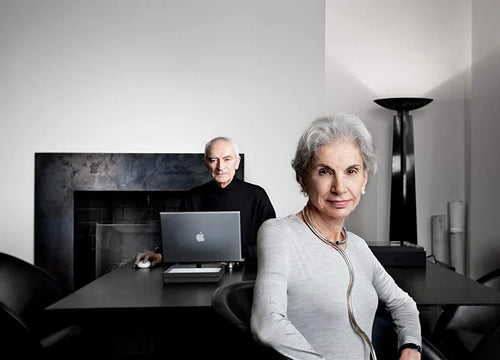
about the designer
Lella and Massimo Vignelli were pivotal figures in the design world, renowned for their clarity and coherence in numerous projects. Massimo started his design journey as a draftsman in Milan, influenced by Adolf Loos’ belief that an architect should design everything from a spoon to a city. Both Lella, born into an architectural family in Udine, and Massimo shared a comprehensive design philosophy, encapsulated in their book "Design is One," emphasizing consistency and timelessness. After their training, they moved to the US, co-founding Unimark International and later starting Vignelli Associates. Their impressive portfolio includes corporate identities for American Airlines and the New York City Transit Authority, as well as graphic design, interiors, furniture, and exhibitions for prestigious institutions. Their legacy is celebrated in museums worldwide, and they were honored with numerous awards, including the National Design Lifetime Achievement award in 2003

about the designer
Lella and Massimo Vignelli were pivotal figures in the design world, renowned for their clarity and coherence in numerous projects. Massimo started his design journey as a draftsman in Milan, influenced by Adolf Loos’ belief that an architect should design everything from a spoon to a city. Both Lella, born into an architectural family in Udine, and Massimo shared a comprehensive design philosophy, encapsulated in their book "Design is One," emphasizing consistency and timelessness. After their training, they moved to the US, co-founding Unimark International and later starting Vignelli Associates. Their impressive portfolio includes corporate identities for American Airlines and the New York City Transit Authority, as well as graphic design, interiors, furniture, and exhibitions for prestigious institutions. Their legacy is celebrated in museums worldwide, and they were honored with numerous awards, including the National Design Lifetime Achievement award in 2003
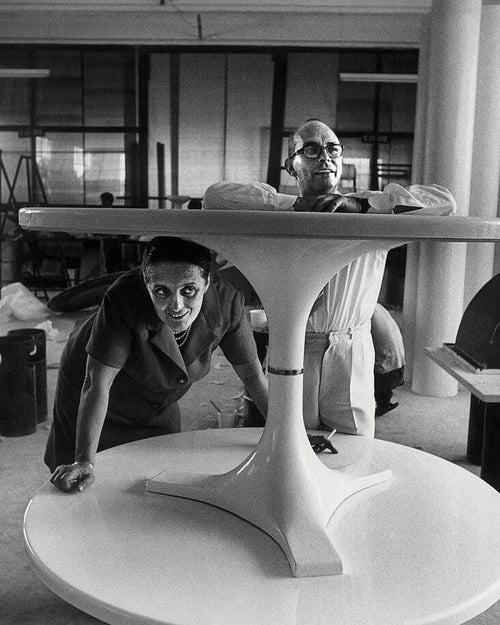
about the designer
Anna Castelli Ferrieri is the embodiment of the Italian creative philosophy that advocates designing “from the teaspoon to the city.” Castelli Ferrieri has contributed designs to both. Castelli Ferrieri started designing for Kartell in 1966, after being chosen as the architect for their headquarters. Famous for its critical role in the introduction to the consumer market of plastic as an acceptable material, Kartell was instrumental in bringing such innovative designers to Kartell as Joe Colombo, Marco Zanuso with Richard Sapper, and Achille Castiglioni. In her own designs for Kartell, Castelli Ferrieri exploited new materials through innovative forms. For her “4970/84” container elements, Castelli Ferrieri treated the design as a mini architectural exercise, with units that are stackable and interchangeable based on the needs of the new lifestyle of the 1960s. For her beautiful and useful designs, Castelli Ferrieri has won numerous design awards, including the prestigious Compasso d’Oro, but the fact that most of her pieces are still in production bespeaks the highest praise.

about the designer
Anna Castelli Ferrieri is the embodiment of the Italian creative philosophy that advocates designing “from the teaspoon to the city.” Castelli Ferrieri has contributed designs to both. Castelli Ferrieri started designing for Kartell in 1966, after being chosen as the architect for their headquarters. Famous for its critical role in the introduction to the consumer market of plastic as an acceptable material, Kartell was instrumental in bringing such innovative designers to Kartell as Joe Colombo, Marco Zanuso with Richard Sapper, and Achille Castiglioni. In her own designs for Kartell, Castelli Ferrieri exploited new materials through innovative forms. For her “4970/84” container elements, Castelli Ferrieri treated the design as a mini architectural exercise, with units that are stackable and interchangeable based on the needs of the new lifestyle of the 1960s. For her beautiful and useful designs, Castelli Ferrieri has won numerous design awards, including the prestigious Compasso d’Oro, but the fact that most of her pieces are still in production bespeaks the highest praise.

about the designer
Lella and Massimo Vignelli were pivotal figures in the design world, renowned for their clarity and coherence in numerous projects. Massimo started his design journey as a draftsman in Milan, influenced by Adolf Loos’ belief that an architect should design everything from a spoon to a city. Both Lella, born into an architectural family in Udine, and Massimo shared a comprehensive design philosophy, encapsulated in their book "Design is One," emphasizing consistency and timelessness. After their training, they moved to the US, co-founding Unimark International and later starting Vignelli Associates. Their impressive portfolio includes corporate identities for American Airlines and the New York City Transit Authority, as well as graphic design, interiors, furniture, and exhibitions for prestigious institutions. Their legacy is celebrated in museums worldwide, and they were honored with numerous awards, including the National Design Lifetime Achievement award in 2003

about the designer
Lella and Massimo Vignelli were pivotal figures in the design world, renowned for their clarity and coherence in numerous projects. Massimo started his design journey as a draftsman in Milan, influenced by Adolf Loos’ belief that an architect should design everything from a spoon to a city. Both Lella, born into an architectural family in Udine, and Massimo shared a comprehensive design philosophy, encapsulated in their book "Design is One," emphasizing consistency and timelessness. After their training, they moved to the US, co-founding Unimark International and later starting Vignelli Associates. Their impressive portfolio includes corporate identities for American Airlines and the New York City Transit Authority, as well as graphic design, interiors, furniture, and exhibitions for prestigious institutions. Their legacy is celebrated in museums worldwide, and they were honored with numerous awards, including the National Design Lifetime Achievement award in 2003
